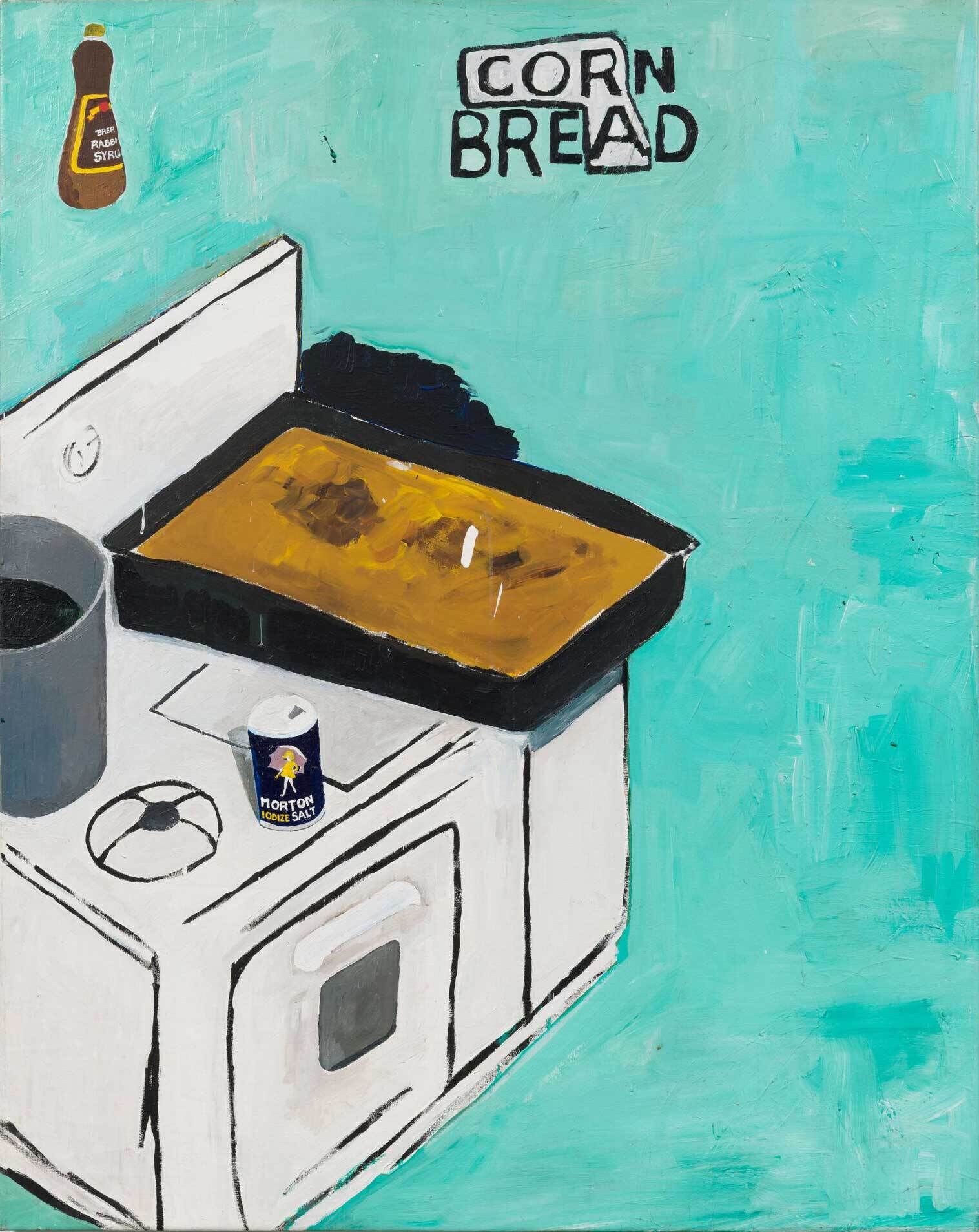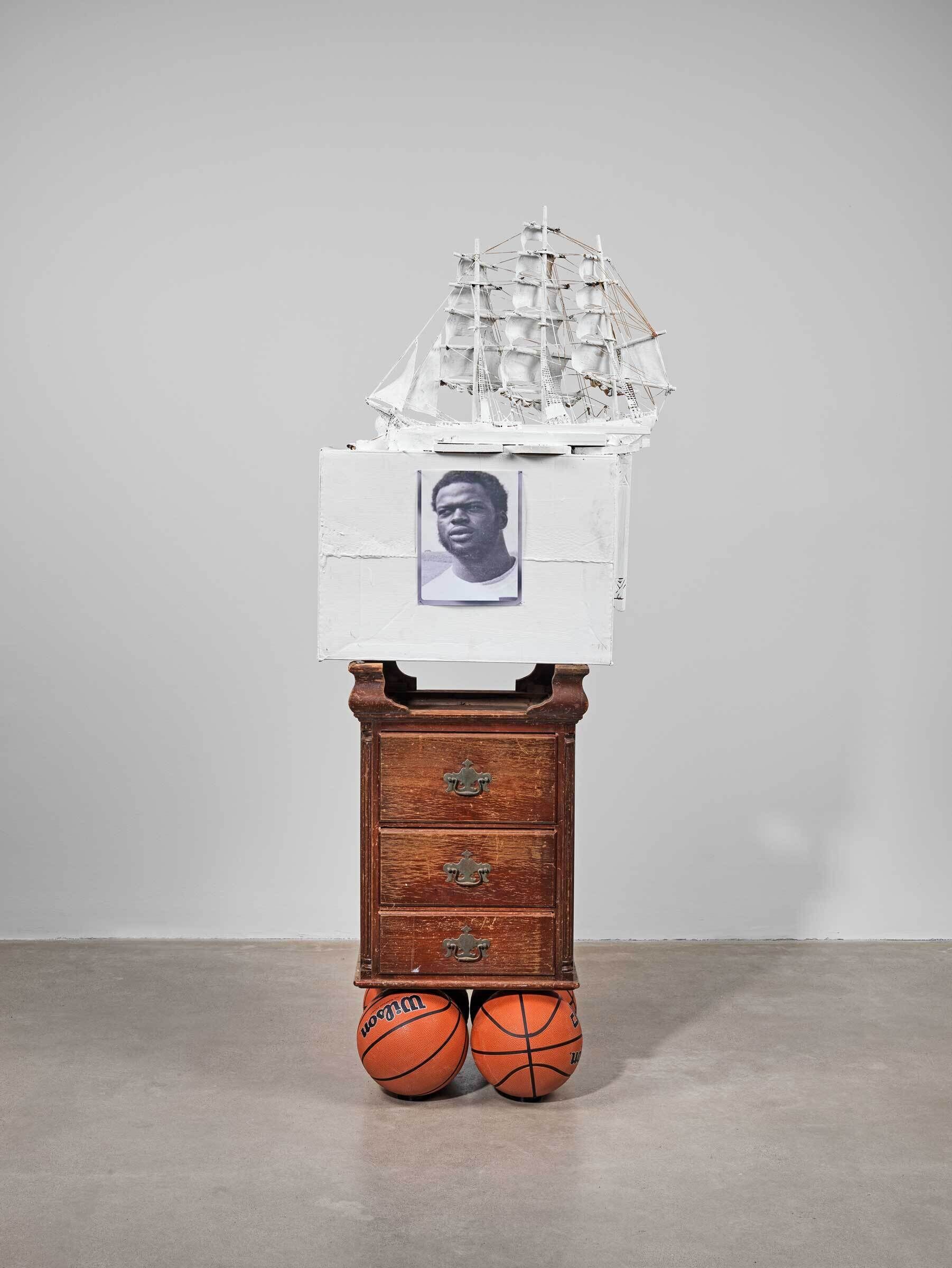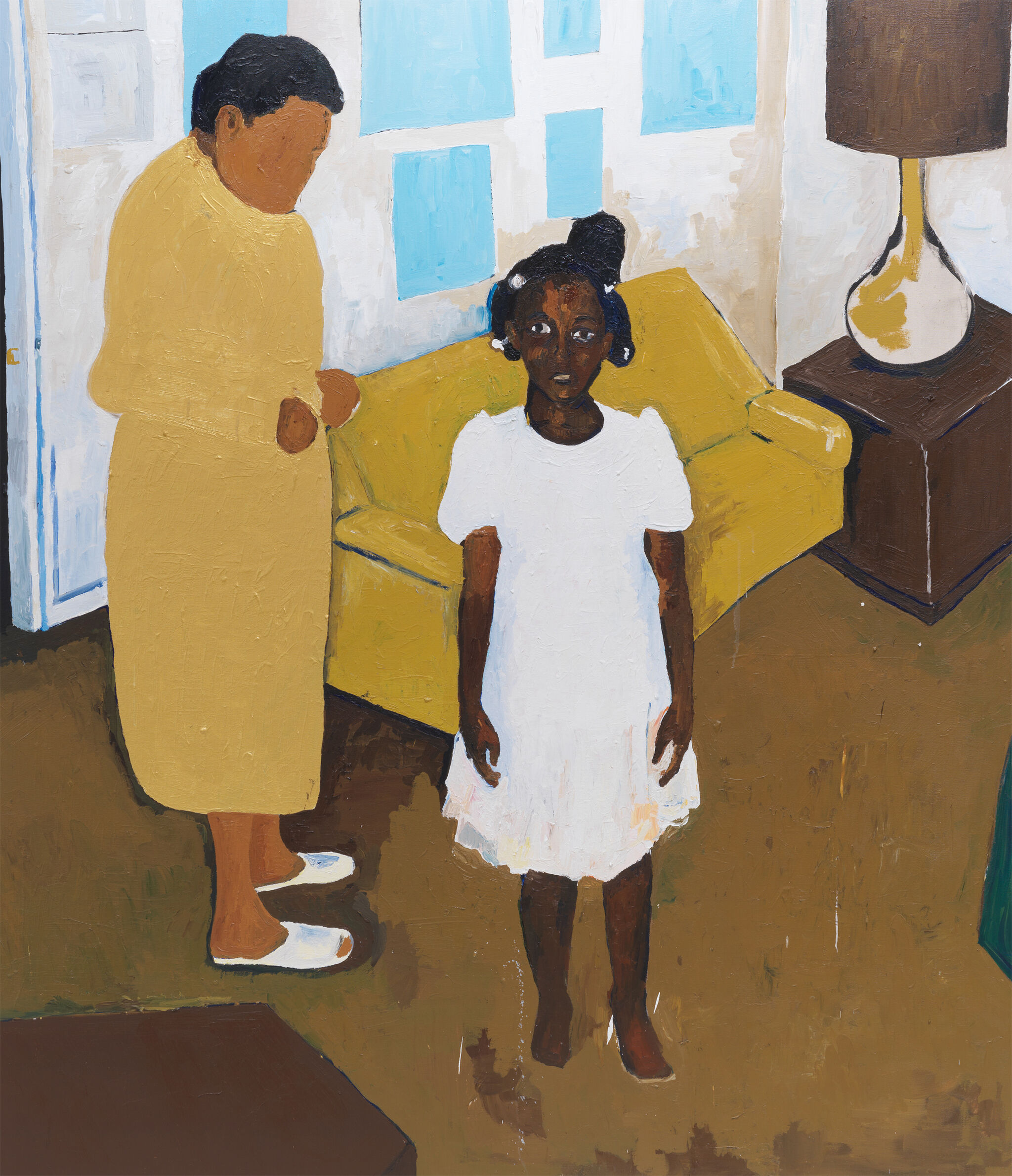Object Portraits
Objects can convey stories about the people who own them, where they lived, and when. Combined, objects can take on new meanings. In his paintings and sculptures, Henry Taylor incorporates and assembles objects in unique ways. They inspire in viewers unexpected connections between the objects and their contexts.
In Cora, (cornbread), 2008, Taylor paints a white stove in front of a field of turquoise. He says, “there can actually be beauty in that emptiness.” On top of the appliance there’s a black sheet pan with cornbread, a Morton Salt canister and pot. Taylor depicts the objects from an elevated angle. Above the scene Taylor encircles the letters “C O R A'' in the word “CORNBREAD” to highlight his mother’s name. In the upper left-hand corner floats a bottle of Brer Rabbit syrup. The painting is an homage to his mother and simultaneously conjures up his family’s East Texas roots. It also alludes to the Br’er Rabbit stories, that are central to the African diaspora and were originally passed down by African-Americans through oral traditions. Additionally, it hints at the history of racism in United States commercial packaging.
Taylor’s practice celebrates friends and neighbors, as well as individuals who have achieved political, artistic, and athletic success. In the sculpture Untitled, 2021, Taylor composed found objects and a photograph of his former next-door neighbor the U.S.C. Trojans football star Clint Strozier (b. 1955). Four basketballs support a vintage wooden chest that he installed upside down. On top of the chest rests a white cardboard box with a pinned black and white photograph of a young Strozier. A white model of a full-rigged ship is propped above the box.
Activities
How would you assemble a self-portrait with objects?
Taylor has collected all kinds of objects for his art. He explains, “When I'm driving around, I still catch myself scanning over piles of trash! Sometimes you got to just drag stuff in and have it be there.” Ask students to think about which specific objects might represent them. Invite them to carefully arrange their selected objects in order to deepen the connections between them and their personal meanings.
How could you create a “portrait” of your neighborhood or community?
Inspire students to think about what makes their communities special. Have them discuss the key details, sites, and individuals they believe exemplify their neighborhoods and are important to celebrate. Taylor emphasizes, “…it’s about respect, because I respect all these people. It’s a two-dimensional surface, but they are really three-dimensional beings.” Ask students to consider what means (writing, painting, sculpture, photography, video, dance, performance, etc.,) would best creatively express their findings. Motivate them to make their works and reflect on their messages. Finally, encourage students to share their artworks with others in their surroundings.
How would you transform one artform into another?
Taylor’s sources of inspiration span from music and pop culture to current events and history. He reflects, “I wish sometimes you could hear things in my paintings.” Ask students to select a work of art from any discipline. Have them discuss the work’s attributes and their interpretations. Remind students that Taylor believes, “We can all have lyrics to a song, but everybody’s not going to sing that song the same.” Invite them to use a different artform to create new works inspired by their original selections.
How would you make an intuitive artwork?
Taylor, who says he’s “influenced by life” explains, “I try to be open to a lot of things. Every painting is so different. I don’t have a formula. Sometimes I work with photographs, other times it’s intuitive…I’ll let everything permeate the work. I just try to be me. What you see is what you get.” Have students discuss their ideas about the word “intuitive”. Let them choose a medium of interest. Encourage them to clear their minds and relax. Based on what they feel to be true to them, and without conscious reasoning, invite them to make their intuitive artworks.


